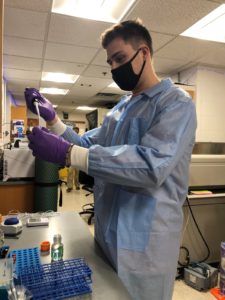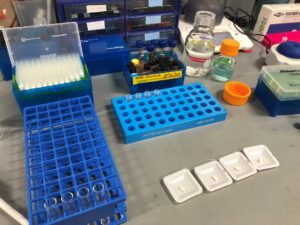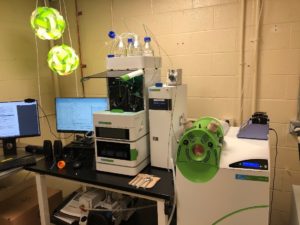

IMMAD-Impairment Measurement Marijuana and Driving, of Quincy, Massachusetts, is a bioscience company working to fill the gap of limited technology to detect a driver’s impairment with marijuana use. IMMAD is collaborating with the Boston University School of Medicine’s Biomedical Forensics (BMFS) Program to do something about the risk of marijuana-impaired drivers contributing to fatal crash rates. The BMFS team have found that tears are an excellent matrix from which to identify active and inactive cannabinoids.
Further research is expected to demonstrate tears as being a more sensitive and specific measure than either breath or saliva, says Denise A. Valenti, OD, CEO and owner of IMMAD. The science abstract discussing the early findings will be presented at the science forensics conference, Midwest Association for Toxicology and Therapeutic Drug Monitoring Virtual Conference, in April 2022.


The two worked on the hypothesis that, because the tears have a large quantity of lipophilic/fat components and because cannabis/THC/marijuana adheres very well to fat, the tears will be a more efficient and a better objective measure of cannabinoids with marijuana use than saliva or breath. Saliva and breath have very few lipid/fat components and do not adhere well or for long to marijuana cannabinoids. Breath as a water vapor is not likely to be capable of measuring cannabis consumption if the route of use was in edible form.


IMMAD and Boston University measured the tears of volunteers having used their own legal adult use marijuana at the IMMAD research site in Quincy during the months of November, December and January. “With the legalization of marijuana, there is a perception that it is safe to perform normal activities such as driving or working. This is not true, decades of research on marijuana’s impairing effects demonstrates that it is not safe to operate a motor vehicle or other safety sensitive function while using marijuana. Therefore, it is paramount that we conduct research and develop ways in which we can detect marijuana use and assess impairment,” says Botch-Jones.
NO FIELD TEST
Unlike alcohol, there is no breathalyzer or standard field sobriety test currently in general use roadside by the police to measure an impairment to drive with marijuana. The more reliable means to determine recent use of marijuana is a blood test. The levels of cannabinoids in the blood do not have a linear relationship to functional impairment to drive and cannot, in general, be used effectively to determine if marijuana related impairment contributed to the crash.




There are no roadside tests of breath currently ingeneral use or approved by the U.S. Food and Drug Administration available to law enforcement to measure marijuana. While there are tests of saliva in use in Canada, Europe and states such as California and Michigan, they are not in use in Massachusetts, says Dr. Valenti. Developing an effective, accurate measure of marijuana in the driver’s system will be essential to understand how its use may or may not have contributed to a fatal crash.
“IMMAD already has the working prototype of technology to measure vision loss and dysfunction with marijuana use and this is predicted to be an effective means to determine the actual impairment to drive,” Dr. Valenti says. “IMMAD is committed to research and technology in support of the responsible use of marijuana. Use of marijuana temporarily impairs functions critical for safe driving.” The measure of the presence of cannabinoids in body fluids will confirm what is causing the impairment to drive, and the use of tears may be an effective means to do this.
INTRICACIES OF MARIJUANA RESEARCH
The analysis of tears relies on volunteers from the community who have been “opportunistically” dosing with their own legal adult use marijuana or medicinal marijuana after having had an initial intake screening visit without having used any alcohol or marijuana. Volunteers make a preliminary visit, without having dosed, to the IMMAD research facility where the process is reviewed and the volunteer signs a research informed consent, standard protocol for human research. The research coordinator than takes information about when and where the volunteer will be available after having dosed with their own marijuana product. The team arranges an Uber or Lyft ride to and from the research facility, where samples of tears are taken using simple swabs or pipettes and blood is drawn to compare with the tears. The research has had approval by an accredited Institutional Review Board.
The completed study was part of intern Mello’s required research as part of the Master’s level program. This academic program trains aspiring forensic scientists in a variety of disciplines applicable to both crime scene investigation and evidence analysis, skills crucial to today’s comprehensive forensic investigations.
Dr. Valenti says IMMAD reminds adults to enjoy legal adult marijuana responsibly but not to drive. IMMAD welcomes inquiries about education programs and how legal adult use marijuana consumers can become a research volunteer. Contact deniseavalenti@gmail.com or call 617 320-2997 to learn more.



